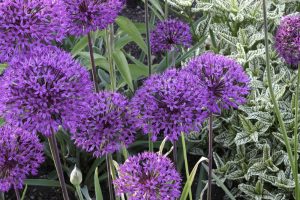 Convallaria majalis
Convallaria majalis
(kon-vah-LAH-ree-ah mah-YAH-lis)
Family: Liliaceae; Asparagaceae
Common name: lily-of-the-valley; May lily; May bells; lady’s tears
Zone: 3 – 9
Height: 10 in (25 cm)
Spread: indefinite
Aspect: partial shade; full shade
Soil: fertile; moist; well-draining
Water: moderate
Description: An herbaceous perennial with a vigorous spreading habit. Elliptical, bright green leaves are upright in stature. A single stem arises from the centre of the plant in May from which dangle a multitude of wonderfully fragrant, pendulous, bell-shaped, white flowers. Red berries follow in summer.
Special Notes: Native to the temperate regions of North America, Asia and Europe. Good cut flower. Can be very invasive, especially in moist fertile soil, so best to keep this plant well contained. May have a problem with leaf spots. Leaves will turn brown on edges if plant is kept too dry. Deer and rabbit resistant. Propagate by fresh seed or by division in early spring or autumn.
In our Zone 7a garden: We grow this plant in a tiny bed at the foot of our back steps. Hemmed in by a concrete sidewalk and a concrete retaining wall keeps it from running amok. Every few years, we dig out a clump to ease the over-crowding. This keeps the patch looking nice and producing an abundance of blooms. And while I am talking about these deliciously scented flowers, I should also mention we get lots of blossoms even though our patch of lily-of-the-valley is in full shade. It is also under the overhang of the eaves in an area where we do not water.
The harsh conditions our Convallaria majalis plants are subjected to proves this species can take tough conditions and still throw out good blooms. Few things can surpass starting one’s day with a whiff of lily-of-the-valley as soon as you step outdoors.
Caution: All parts of the plant are toxic. Fatal if ingested in large quantities.
RHS Award of Garden Merit 1993
Posted on April 14, 2013; updated on January 29, 2025




